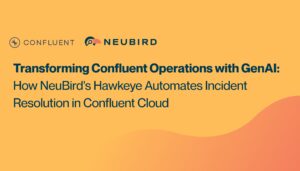Image Pull Errors: How Hawkeye Streamlines Container Deployment Troubleshooting
How SRE teams are automating container deployment investigations with Hawkeye
Your team just deployed a new feature to production when PagerDuty alerts: “Maximum pod_container_status_waiting_reason_image_pull_error GreaterThanThreshold 0.0”. What should have been a routine deployment has turned into a complex investigation spanning multiple AWS services, container registries, and Kubernetes components.
The Modern Image Pull Investigation
Today’s container deployment issues occur in environments with sophisticated observability stacks. CloudWatch diligently logs every container event, Prometheus tracks your deployment metrics, and your CI/CD pipeline maintains detailed records of every build and deployment. Yet when image pull errors occur, this wealth of information often adds complexity to the investigation rather than simplifying it.
A typical troubleshooting session starts in your Kubernetes dashboard or CLI, where you see the ImagePullBackOff status. CloudWatch logs show the pull attempt failures, but the error messages can be frustratingly vague – “unauthorized” or “not found” don’t tell the whole story. You begin a methodical investigation across multiple systems:
First, you check AWS ECR to verify the image exists and its tags are correct. The image is there, but is it the version you expect? You dive into your CI/CD logs to confirm the build and push completed successfully. The pipeline logs show a successful push, but to which repository and with what permissions?
You switch to IAM to review the node’s instance role and its ECR policies. Everything looks correct, but when did these credentials last rotate? Back to CloudWatch to check the credential expiration timestamps. Meanwhile, you need to verify the Kubernetes service account configurations and secret mappings.
Each system provides critical pieces of the puzzle, but connecting them requires constant context switching and mental correlation of timestamps, configurations, and events across multiple AWS services and Kubernetes components.
Why Image Pull Errors Defy Quick Analysis
The complexity of modern container deployment means that image pull errors rarely have a single, obvious cause. Instead, they often result from subtle interactions between multiple systems:
An ECR authentication token might be valid, but the underlying instance role could be missing permissions. The Kubernetes secrets might be correctly configured, but the node might be pulling from the wrong registry endpoint. Network security groups and VPC endpoints add another layer of potential complications.
Your observability tools capture the symptoms across all these systems, but understanding the sequence of events and identifying the root cause requires simultaneously analyzing multiple authentication flows, networking paths, and permission boundaries.
Hawkeye: Your Deployment Detective
Here’s how Hawkeye transforms this investigation:
The Hawkeye Difference
What sets Hawkeye apart isn’t just its ability to check permissions or validate configurations – it’s how it analyzes the complex interactions between AWS services, Kubernetes components, and your deployment pipeline simultaneously. While an SRE would need to manually switch between ECR, IAM, CloudWatch, and Kubernetes tooling to piece together the authentication flow, Hawkeye processes all these systems in parallel to quickly identify where the chain breaks down.
Read more: Beyond deployment troubleshooting, a comprehensive monitoring strategy is essential. Learn how to move beyond static Kubernetes dashboards with Grafana, Prometheus and AI-enhanced observability.
This parallel analysis capability allows Hawkeye to uncover cause-and-effect relationships that might take hours for humans to discover. By simultaneously examining IAM policies, ECR authentication flows, network configurations, and Kubernetes events, Hawkeye can trace how a seemingly minor infrastructure change can cascade into widespread deployment failures.
Real World Impact
For teams using Hawkeye, the transformation extends beyond faster resolution of image pull errors. Engineers report a fundamental shift in how they approach container deployment reliability:
Instead of spending hours jumping between different AWS consoles and Kubernetes tools during incidents, they can focus on implementing systematic improvements based on Hawkeye’s comprehensive analysis. The mean time to resolution for image pull failures has dropped dramatically, but more importantly, teams can prevent many issues entirely by acting on Hawkeye’s proactive recommendations for authentication and permission management.
Implementation Journey
Integrating Hawkeye into your Kubernetes environment is straightforward:
- Connect your existing observability tools – Hawkeye enhances rather than replaces your current monitoring stack
- Configure your preferred incident response workflows
- Review Hawkeye’s incident analysis, drill down with questions, and implement recommendations.
Scale your team and improve morale by transforming your approach to application debugging from reactive investigation to proactive improvement. Let Hawkeye handle the complexity of Image Pull Error analysis while your team focuses on innovation.
Follow
Hawkeye ![]()
Written by







